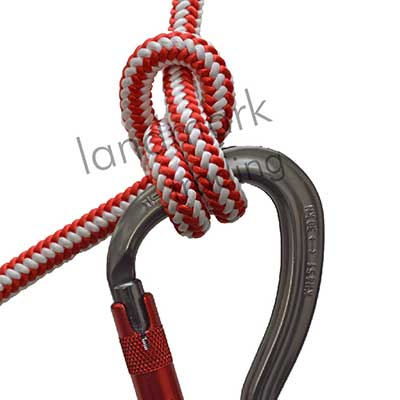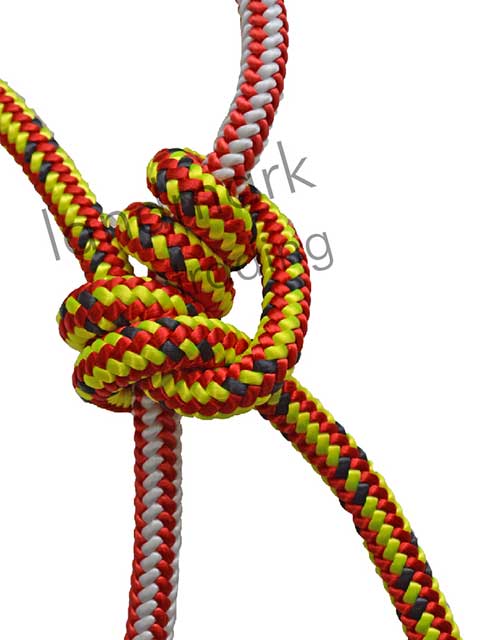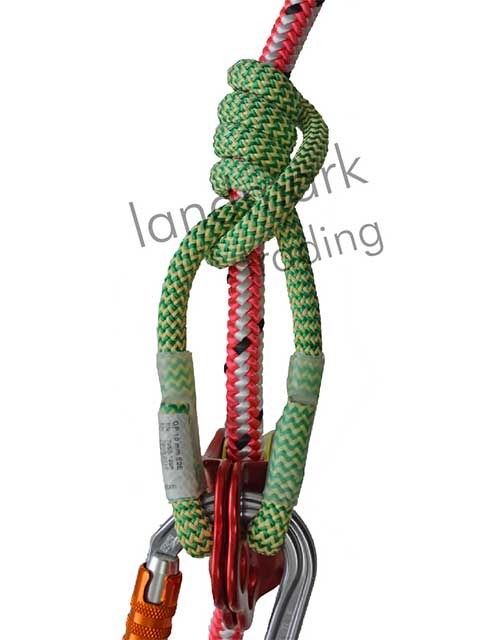
A Guide to Basic Tree Climbing Knots, pt. 1
The tree climbing rope is an essential item of gear for all arborist – the central mechanism used in climbing, rigging, rappelling and a multitude of other aspects within the realm of arboriculture. No other profession ties knots as frequently and with such variety as those who work in the trees.
In a profession such as tree work or working at heights, rope techniques can only be fully utilised if you possess the knowledge of how to select, use and tie knots properly.
Used for both safety and functionality, our series of articles on basic knots will aim to give a brief overview of the techniques, history and application of some important knots in the arborist’s arsenal.
What is There to Know About Knots?
Considering their utility, quite a lot. Although much more in-depth information can be gathered from books dedicated to the subject of knots, here we’re going to introduce a little of the terminology surrounding knots, particularly ones that will appear throughout the rest of the article.
Although there are quite a few different types of knots you’ll become familiar with over the course of your working life, there are a couple of knots (or rather types of knots) that will become invaluable to you over time; primarily hitches and bowlines. Each type of knot has a multitude of variants but essentially they are all different means of completing the same purpose.
A hitch knot is useful to an arborist because it is used for binding a rope to an object, each variation having its own speciality, such as a Blackwall Hitch for a temporary method of attaching a rope to a hook.
A bowline, or the ‘King of Knots’ because of it’s importance across all practices is simply used to fix a loop at the end of a rope, lending it to a wide range of uses. While there are well over 200 variations of the bowline, it’s primary use within climbing and arborism is to create an eye or to anchor a rope around an object.
The other knots we will introduce are ones that can either be used alone or as safety measures in conjunction with other knots. In a profession where safety is paramount, ‘stopper’ knots like the double overhand or figure eight are essential. Acting as preventative measures from knots binding, or from you pulling the rope through the climbing hitch.
For brevity, we’ve split up our introduction to the basic knots every arborist should know across two articles.
The Most Useful Knots and How to Tie Them
Whilst this lists in these articles are by no means extensive, these basic knots cover a multitude of applications and constitute a solid enough foundation to span across the majority of tasks within a standard arborist role.
From rigging to ascending, this comprehensive look at the following basic knots details the correct applications, utility, advantages, and history – as well as the techniques to tie them.
Let’s start with the hitches.
Anchor Hitch
The anchor hitch knot is used as an in or end-line attachment in closed climbing systems, or a termination knot within an open climbing system, primarily with load lines, climbing lines or split-tails. Although it can also be a good choice for tying a throwline to a throw bag.

The anchor hitch is used to cinch tightly around rings or karabiners, particularly oval karabiners with more available rope space. As a termination knot, it is favoured over the double fisherman’s loop and similar buntline hitch as two, instead of one, turns of rope are taken over the karabiner. This extra turn increases the available surface area of the rope to grip the connector.
It is this that contributes towards the easy untying of the anchor hitch, despite a heavy load and an occasional jarring with modern materials. Another extra turn can be easily taken to ensure a further resistance to jamming, although this may not always be possible with smaller links of chain or shackles.
Tips For Tying an Anchor Hitch
- If the knot is properly tied and there is still a tail of at least a few inches, it’s not necessary to use a stopper knot.
- If used within a traditional climbing system, it’s possible to avoid the extra effort of passing the long tail twice around the karabiner, by tying the knot first, without the ‘biner in place.
- To untie the anchor hitch, just push against the bar of rope encircling the standing line
How to Tie an Anchor Hitch
Blake’s Hitch
Although Blake’s Hitch was first described by Heinz Prohaska in an Austrian Guides Periodical in 1981 and then again in the Nylon Highway #30 in May 1990. The name of the eponymous knot comes from Jason Blake, a climber from California, who is credited in 1994 with describing the knot to other arborists.

As it has less of a tendency to roll out or bing, Blake’s Hitch has eventually replaced the use of the Tautline Hitch among tree climbers and has become an important knot for arborists to use to ascend and descend on ropes. Particularly when using Doubled Rope Technique.
Although the prevalence of this knot has waned slightly due to the creation of a number of hitches that are smaller, better and can be tended by pulleys, Blake’s Hitch still has a number of advantages.
Primary among them is that this knot can be tied with the end of a split tail instead of requiring a Prusik Loop and allows the climber to be supported on a double rope system. Although a “stopper knot,” like the Figure Eight is recommended to be tied with tag end after the knot is drawn up, for safety.
How to Tie a Blake’s Hitch Knot
Tying a Blake’s Hitch Knot can be done in four simple steps
- Working from bottom to top, wrap the line four times around the other rope
- Make sure to leave enough room in the second wrap to accommodate the tag end of the rope
- Run the tag end down to and over the standing line, pushing behind the static rope and out through the second wrap
- To finish the knot, tighten it and finish with a stopper knot, such as a Figure of Eight (see below) at the end of the line.
Distel Hitch
A popular knot due to its functionality, the Distel hitch can be used on a main climbing line, or work positioning strop within a closed, split tail, climbing system, using double or single rope technique.

Extremely responsive, the Distel hitch allows a climber to ascend or descend simply by moving the hitch in the intended direction (as it only grips in one direction). And functions as both a main climbing line hitch and an adjustable, one-handed, lanyard friction hitch when combined with a micro pulley or hitch climber pulley.
When set correctly, the Distel tends not to slip or jam and is slightly more stable than the similar Tautline hitch.
Tips For Using a Distel Hitch
- If you are using a line without eyes, tie a knot like a Scaffold or a Double Fisherman’s at each end in order to attach a karabiner. Alternatively, you can utilise friction hitch cordage with spliced or stitched eyes for a cleaner finish.
- Ensure that the hitch cord is durable enough for the job, your rope is well maintained, and remember to descend slowly in order to avoid friction damage.
How to Tie a Distel Hitch
- Wrap a split tail or prusik friction cord 4 times around the primary static rope
- After the fourth wrap bring the wrapping tail down to make an additional wrap at the bottom of the other wraps, ensuring it is going in the same direction. Tie a half hitch by tucking the tail under itself in the front of the knot.
You can adjust the number of wraps in order to temper the amount of friction received and to accommodate the length of your hitch cord, but the effectiveness of the Distel to grab the line and release afterwards is directly affected by the number of turns taken with the hitch. Although the number is most often determined by the length of the split-tail sling, the magic number or configuration is usually the 4 over 1. Four in one direction, one in the opposing. - Join eyes in front and clip together with a karabiner.
Quick Hitch
The Quick Hitch does exactly what it says on the tin. Quick to tie and equally quick to release, the Quick Hitch has no other real purpose aside from providing a convenient method for an arborist to pull up a second rope.
Despite being first described in a mid-90’s issue of Treeworker magazine, there is no real tracked reference to its origin. Although its simplicity suggests that any number or climbers and arborists could have implemented its use.
How to Tie a Quick Hitch
As we stated above, this list is by no means exhaustive and we’ve only just begun to cover the basic knots every arborist should know.
For more information on properly maintaining your ropes and staying safe while using them, take a look at our blog here: https://www.landmarktrading.com/blog/rope-safety/
